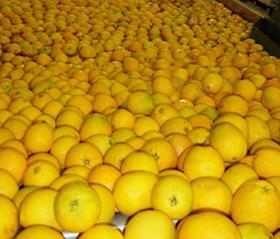
South Africa’s Navel export season is expected to get off to a later start than usual this year. While US markets are still filled with California’s largest ever Navel crop, South African fruit has been slow in maturing.
According to Stu Monaghan of importer DNE World Fruit Sales, significant volume is not expected until at least the first week of July, compared with a normal delivery schedule for Navels of the third week of June.
Exporters of Southern Hemisphere citrus must contend with US and Canadian supply channels plugged with California citrus, as the state is still working its way out of its largest Navel orange crop ever (96m cartons), as well as the biggest Valencia crop (32m cartons) in four years.
“South African Navels are maturing later this year – that’s true,” said Paul Marier of Fisher Capespan. “But they would be coming in later anyway due as much to the size of the California crop.”
Industry sources said that while fruit quality is strong, sizing looks to be smaller than historical averages, peaking at 72 and 88.
Southern Hemisphere citrus marketers have also had to contend with a weak US dollar, which has steadily depreciated against the currencies of the primary citrus growing nations. Since 2006, the US dollar has fallen 20 per cent against the Australian dollar, 18 per cent versus the South African rand, 10.5 per cent against the Peruvian sol and 8.3 per cent against the Chilean peso.
“The South African industry should bring in a maximum of 1.5m cartons (2.3kg equivalents) of clementines this season,” said Mr Marier. “This is quite a drop from recent seasons where we’ve done as much as 3m cartons. The combination of the weak US dollar and competition from South American clementines has hurt us.”
Adding to the economic uncertainty is the escalating cost of fuel that is driving up the cost of transportation. Spot market rates are already setting records for cross-continental trucking this summer, which, according to trade sources, are likely confine Australian citrus to markets west of the Rocky Mountains and South African fruit east of the Mississippi.






No comments yet